Early DWP & SCE Marketing
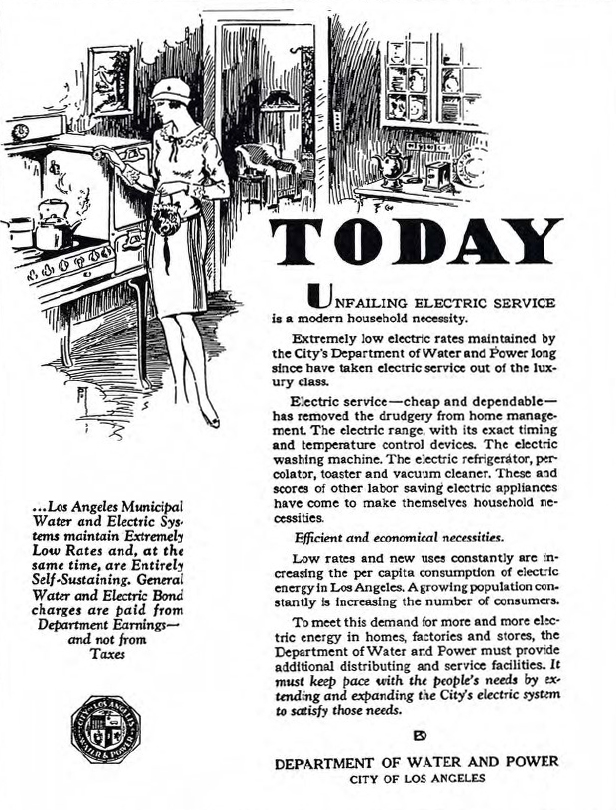 |
|
| (1929)^ - Municipal Water and Power advertisement published in Los Angeles daily newspapers in 1929. Click HERE to see more. |
Historical Notes Throughout the early 1900s, utilities played a key role in promoting the use of the new household appliances that were intimately identified with "modernity" at the time. Many of these appliances enabled a social revolution, which freed women to spend less time on household chores. During the coming decades, more and more women steadily would enter the conventional workforce. |
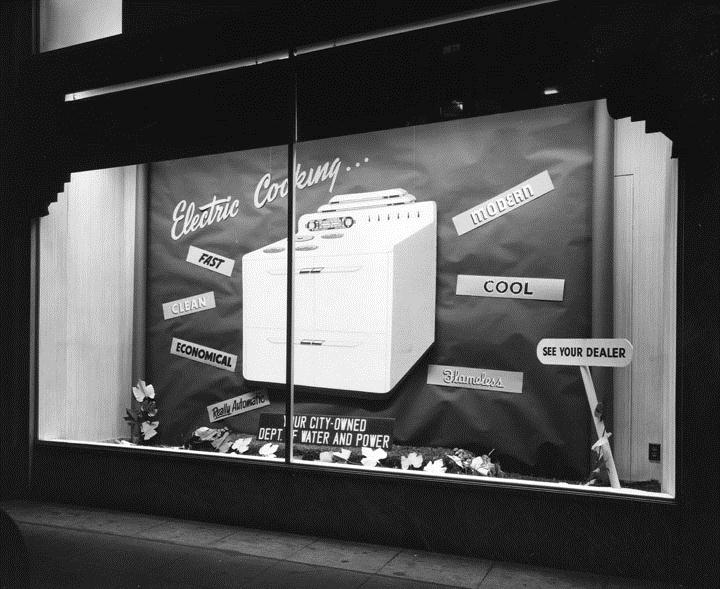 |
|
| (n.d.)* - Advertising display for the Department of Water and Power showing the convenience and economy of electric power. This display shows an entire window with a picture of an electric stove and captions describing its advantages. |
 |
|
| (1916)# - Unloading electric range at Long Beach residence from Electric Range Wagon #52. Photo by G. Haven Bishop (SCE) |
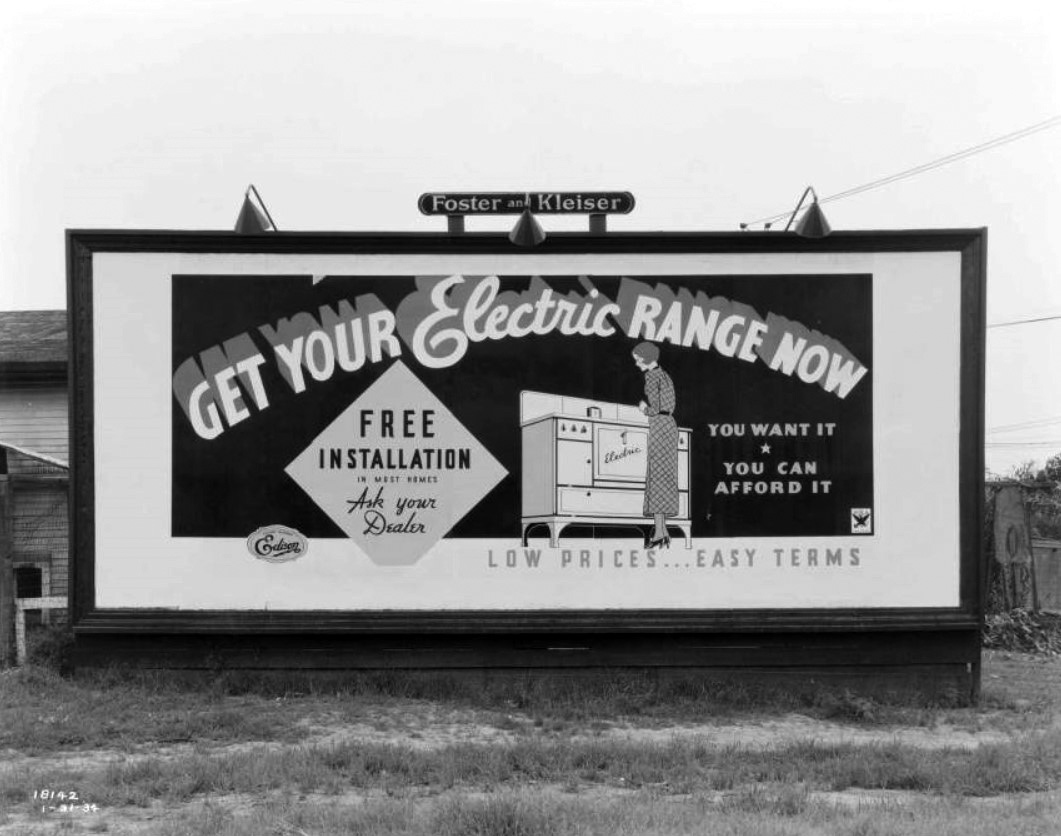 |
|
| (1934)# – SCE billboard for Electric Range with free installation at Inglewood location. |
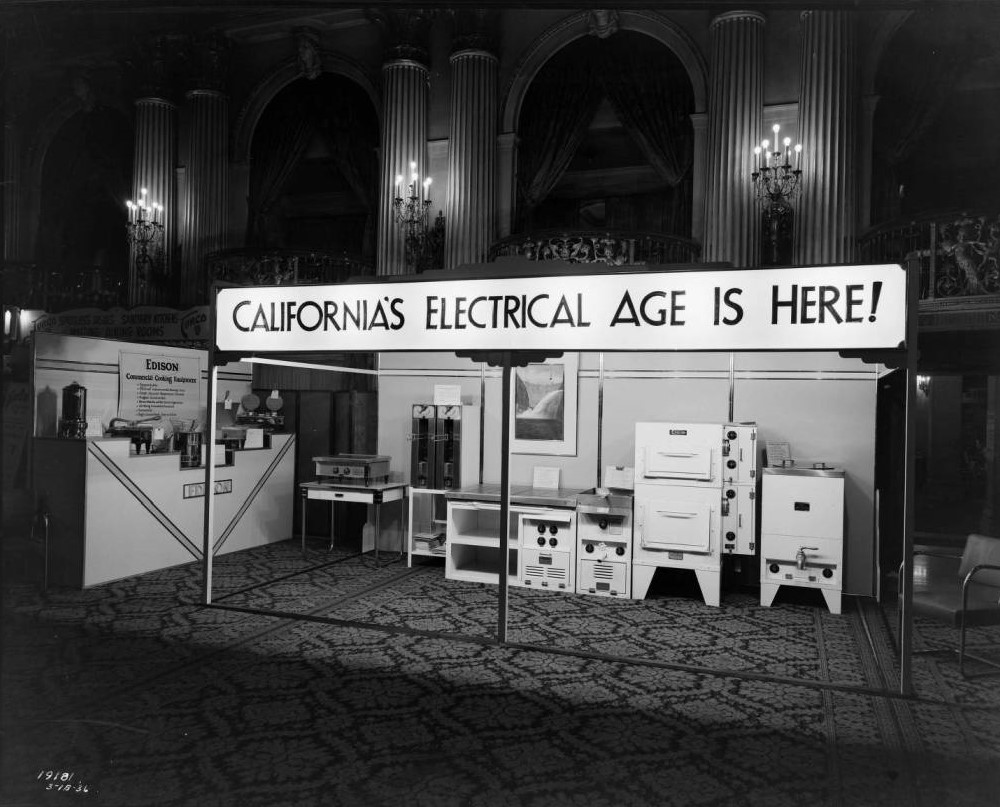 |
|
| (1936)# – Southern California Edison booth at the Biltmore Hotel displaying electrical cooking appliances. Photo Date: March 18, 1936. |
 |
|
| (ca. 1937)* - View showing a man standing next to the electric range display at the Hollywood DWP Branch office. |
Historical Notes The Los Angeles municipal utility did not take on its final name, Department of Water and Power (DWP), until 1937 when the Bureau of Water Works and Supply consolidated with the Bureau of Power and Light. Click HERE for a chronology and explanation of all the DWP name changes. |
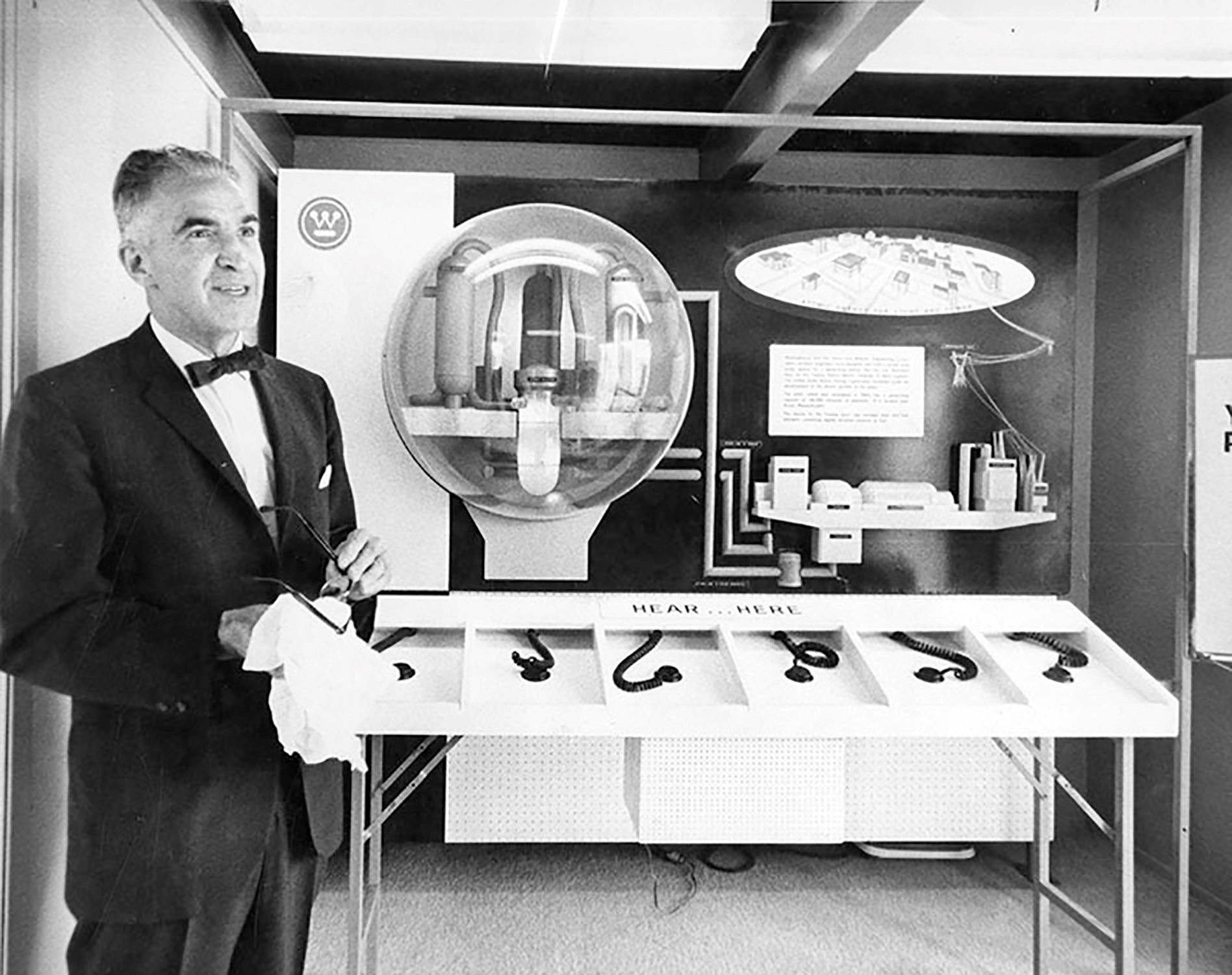 |
|
| (1963)*^ – View showing an exhibit promoting the virtues of a nuclear power plant which DWP was proposing to build in the canyons of Malibu. |
Historical Notes In 1963, Los Angeles officials proposed building a San Onofre-style atomic generating plant in Corral Canyon as a solution to the fast-growing city's need for more electricity. The atomic plant would be tucked between hillsides at the bottom of a deep ravine. Seawater pumped from pipes buried under Pacific Coast Highway and the beach and extending half a mile into the ocean would cool the reactor. City officials thought at first that the atomic plant plan would sail through federal and local reviews. In 1963, they entered into a tentative agreement with the Westinghouse Corp. to buy the generating equipment. The Atomic Energy Commission named a Boston company to design and build the reactor. Officials announced that the plant would be completed by 1967.** |
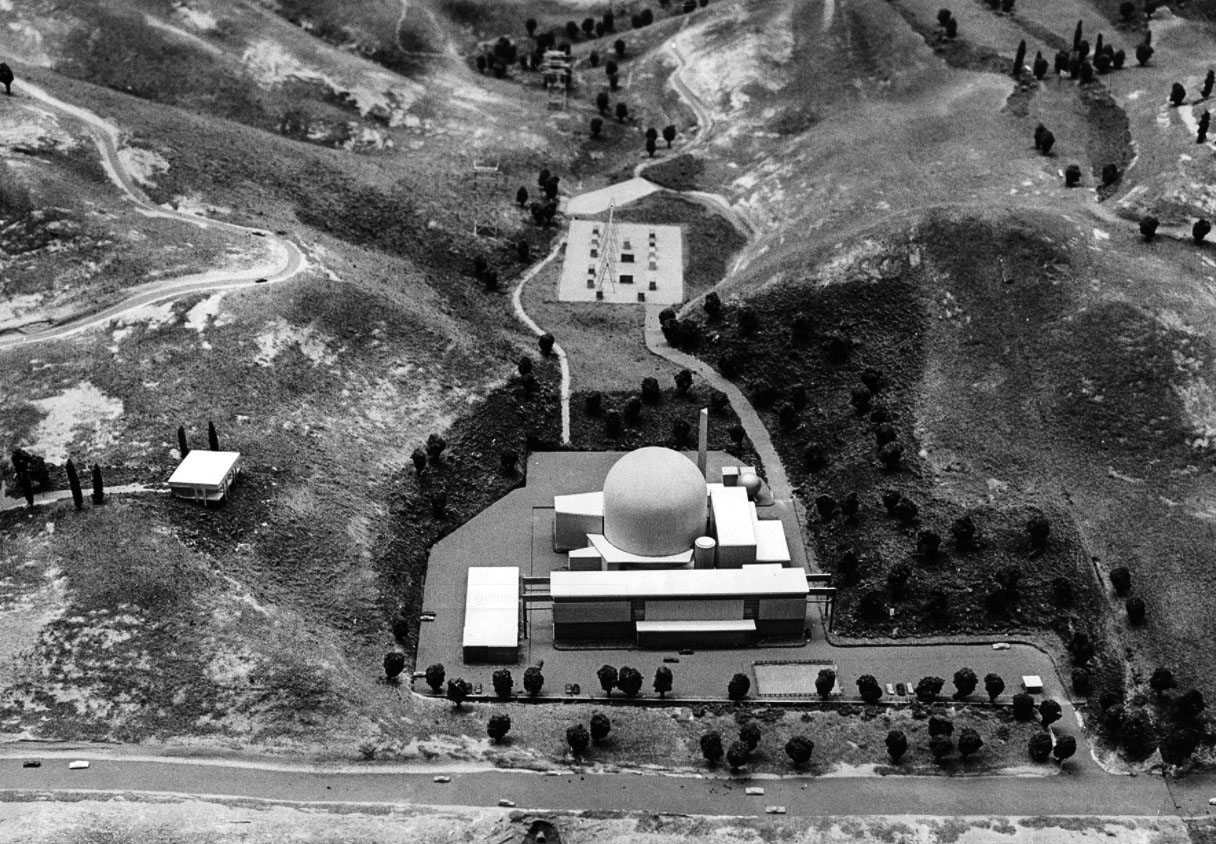 |
|
| (1965)** – View showing a scaled model of DWP’s proposed Nuclear Power Plant in Corral Canyon near Malibu. |
Historical Notes The proposed nuclear plant quickly caused a furor in Malibu, helping galvanize a fledgling environmental movement, leading to the creation of a vast network of public parkland and land-development restrictions throughout the Santa Monica Mountains -- including Corral Canyon. Plans for the new nuclear power plant were finally shelved after experts argued that the isolated canyon three miles west of the Malibu Pier was geologically unstable and unsafe for an atomic reactor. ** |
References and Credits
* DWP - LA Public Library Image Archive
^ 1929 Municipal Water and Power Advertisements
# Huntington Digital Library Archive
*^LA Public Library Image Archive
**LA Times: Still Generating Controversy
< Back
Menu
- Home
- Mission
- Museum
- Mulholland Service Award
- Major Efforts
- Board Officers and Directors
- Positions on Owens Valley and the City of Los Angeles Issues
- Legislative Positions on
Water Issues
- Legislative Positions on
Energy Issues
- Recent Newsletters
- Historical Op Ed Pieces
- Membership
- Contact Us
- Search Index